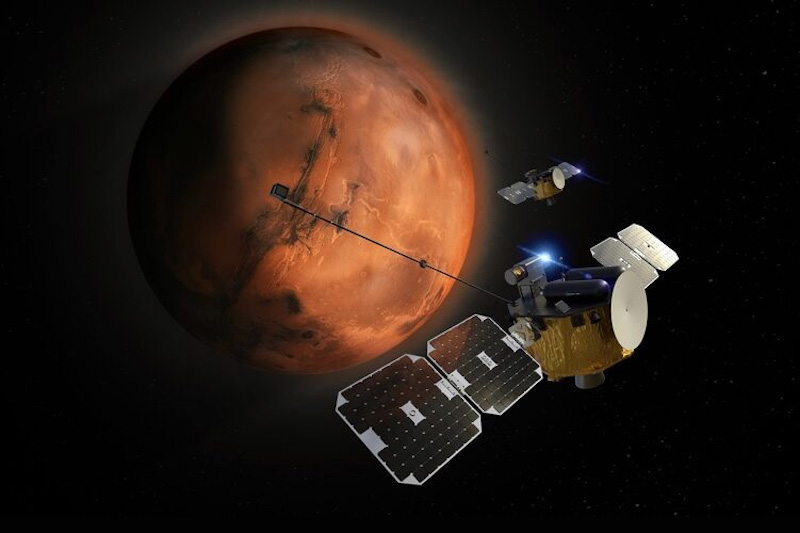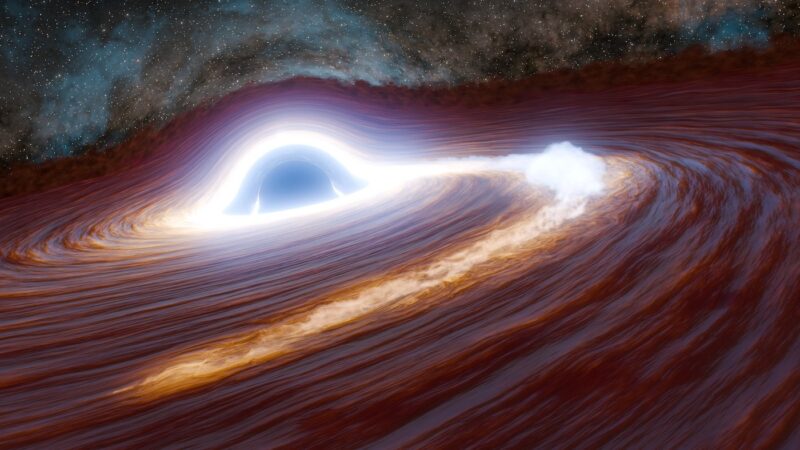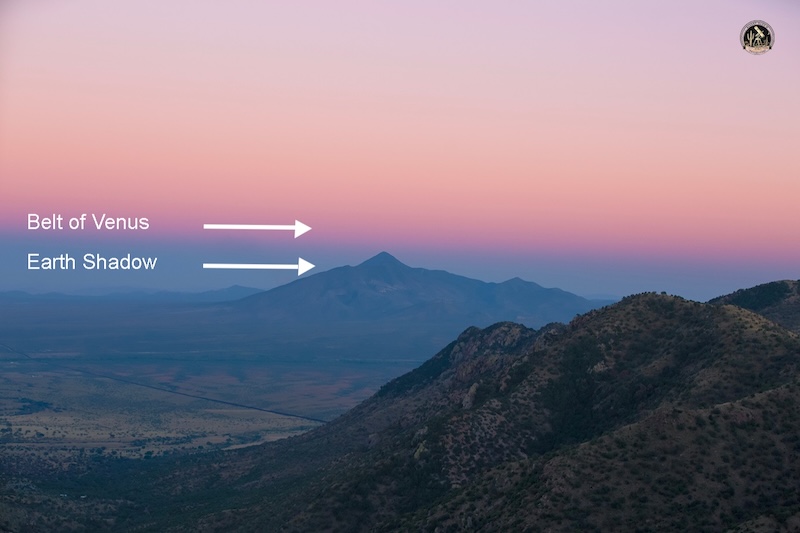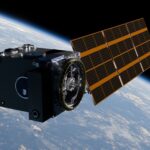Now Reading: ESCAPADE mission launches to Mars on November 9
-
01
ESCAPADE mission launches to Mars on November 9
ESCAPADE mission launches to Mars on November 9

Blue Origin will launch the 2nd flight of its huge New Glenn rocket no earlier than November 9, with the ESCAPADE spacecraft aboard. Current launch window for the ESCAPADE mission: November 9th from 2:45 p.m. EST to 4:44 p.m. EST (19:45-21:44 UTC). Watch in the player above or on YouTube.
ESCAPADE mission launches to Mars on November 9
Blue Origin’s New Glenn rocket will launch the ESCAPADE mission – headed for Mars – into space on November 9, 2025. The mission will go up from Launch Complex 36 at Cape Canaveral Space Force Station in Florida. ESCAPADE stands for Escape and Plasma Acceleration and Dynamics Explorers. The mission will use twin spacecraft, nicknamed Blue and Gold, to study Mars’ magnetic environment.
This will be just the 2nd launch for the New Glenn heavy-lift launch vehicle, after its initial launch in January 2025.
The launch window for the mission will open at 2:45 p.m. EST (19:45 UTC) on November 9, 2025. Watch the launch in the player above or on YouTube.

Mars’ electrically charged environment
The ESCAPADE mission aims to track the internal workings of Mars’ magnetic environment. Mars doesn’t have a global magnetic field in the same sense Earth does. It doesn’t have a single, planet-wide magnetic field generated by a molten, convecting iron core (a dynamo). Earth’s global magnetic field surrounds the whole planet and creates a strong magnetosphere that protects us from the solar wind. Mars doesn’t have this in quite the same way.
But Mars does have many localized magnetic fields frozen into patches of its crust. They are remnant magnetizations, or leftovers from an ancient global magnetic field that Mars apparently had billions of years ago. Mars orbits one step farther from the sun than Earth. And it’s a smaller and colder planet than Earth. When Mars’ core cooled and its dynamo shut down, the global field collapsed. But iron-bearing rocks that had solidified while the field still existed kept their magnetization. Those patches still create small, regional magnetic fields – some surprisingly strong – especially in Mars’ southern highlands.

ESCAPADE’s goal
ESCAPADE’s goal is to study how those crustal magnetic fields interact with the solar wind. ESCAPADE’s twin spacecraft will orbit Mars to measure how solar particles and the Martian atmosphere behave around those regions of remnant magnetism. Scientists expect ESCAPADE will help them understand more of the details of how Mars lost most of its atmosphere over time, and how Mars lost its magnetosphere.
So Mars’ magnetic field is unlike those on other planets. It’s more of a hybrid. On the one hand, it’s a solar-induced magnetosphere, like that on Venus, created in part by the interaction of the solar wind with the Martian atmosphere. On the other hand, it also has localized areas of intrinsic magnetic fields from the planet’s crust. And there are larger-scale global influences as well.
Scientists want to know how energy and matter from the solar wind make their way in and out of Mars’ magnetic environment. NASA described the mission goals:
ESCAPADE will analyze how Mars’ magnetic field guides particle flows around the planet, how energy and momentum are transported from the solar wind through the magnetic environment and what processes control the flow of energy and matter into and out of the Martian atmosphere.

Details of the mission
The ESCAPADE mission is a relatively inexpensive mission with a design led by UC Berkeley. The twin spacecraft have a total cost of under $80 million. That’s only about 10% the cost of sending a typical spacecraft to Mars.
The Blue and Gold spacecraft are nicknamed for Berkeley’s school colors. The probes will orbit the red planet, taking simultaneous observations from different locations. Scientists hope to see the real-time response of Mars’ magnetic environment as it’s buffeted by the solar wind.
As with most questions astronomers aim to solve, this one also boils down to the big picture of life in our universe. Was Mars once habitable for some form of life? And could it be habitable in the future for a human population?

Bottom line: The ESCAPADE mission will launch twin probes – Blue and Gold – to study Mars’ magnetic environment. The launch on a New Glenn rocket is set for November 9, 2025.
The post ESCAPADE mission launches to Mars on November 9 first appeared on EarthSky.
Stay Informed With the Latest & Most Important News
Previous Post
Next Post
-
 012024 in Review: Highlights from NASA in Silicon Valley
012024 in Review: Highlights from NASA in Silicon Valley -
 02Panasonic Leica Summilux DG 15mm f/1.7 ASPH review
02Panasonic Leica Summilux DG 15mm f/1.7 ASPH review -
 03How New NASA, India Earth Satellite NISAR Will See Earth
03How New NASA, India Earth Satellite NISAR Will See Earth -
 04And Thus Begins A New Year For Life On Earth
04And Thus Begins A New Year For Life On Earth -
 05Astronomy Activation Ambassadors: A New Era
05Astronomy Activation Ambassadors: A New Era -
06SpaceX launch surge helps set new global launch record in 2024
-
 07Space Force plans new ‘Futures Command’ amid pressure to speed up modernization
07Space Force plans new ‘Futures Command’ amid pressure to speed up modernization



















